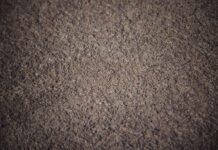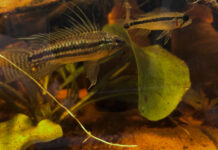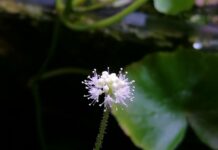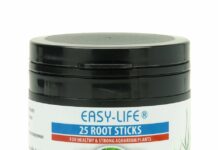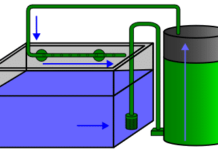In this article we will look at the functions of filters in a freshwater aquarium, the various types of filtration and how to put filter media in the filter.
Let’s start right away!
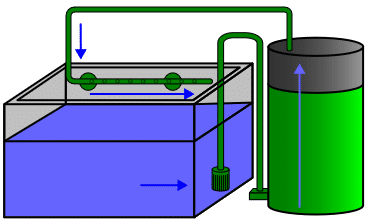
The purpose of the filter
The purpose of aquarium filters is – as the name suggests – to filter the water.
There are usually three types of filtration in aquaria:
- mechanical filtration
- chemical filtration
- biological filtration.
As we will see later, not all types of filter guarantee all three types of filtration at the same time and not all types of filtering are necessary.
Let us see them in detail.
Types of filtration in freshwater aquaria
Mechanical filtration
Mechanical filtration consists of removing suspended solids: fish droppings, dead leaves, food scraps, dust from the bottom, debris, sediment… and more!
This type of filtration is usually achieved by means of synthetic filter materials of different types, which are able to block particles of various sizes. The most commonly used filtering materials in aquaria for mechanical filtration are sponges and perlon wool (or wadding); the former blocks coarse materials while the latter blocks finer materials.
Chemical filtration
Chemical filtration consists in the removal of dissolved chemical compounds in the water, e.g. ammonium, silicates, phosphates, drugs, fertilisers, dyes, etc.
It is usually achieved by means of certain materials or substances that are placed in the filter; without going into detail about how they work and the advisability of using them, in aquaria the most commonly used materials for chemical filtration are zeolite and anti-something resins (anti-nitrate, anti-phosphate, anti-silicate…).
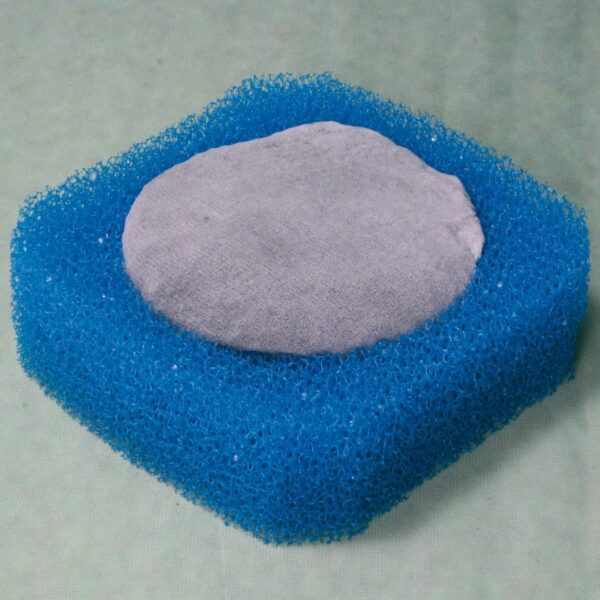
Activated carbon
Activated carbon, on the other hand, performs mechanical-chemical filtering: its action is comparable to that of a mechanical filtering material with a space between the “meshes” of a size similar to that of the molecules, with an additional capacity to block the molecules by adsorbing them.
In other words, with adsorption, activated carbon not only blocks the filtered particles in its ‘mesh’ but also binds them to itself almost permanently (very special conditions are required for activated carbon to release the adsorbed substances; such conditions are extremely rare in aquaria).
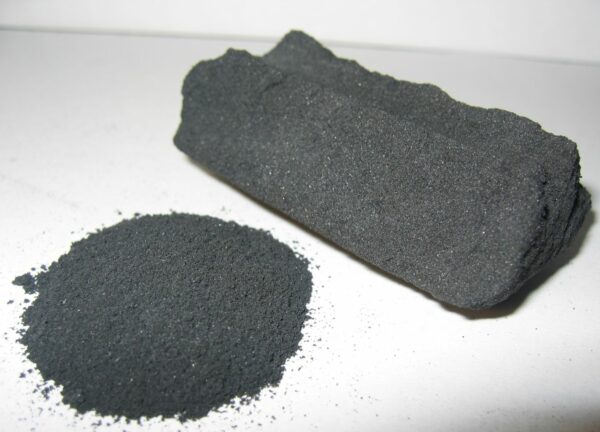
Activated carbon removes many substances dissolved in the water, e.g. drugs, antibiotics, chelators, fertilisers and colouring agents, such as tannins, humic acids and similar substances released by wood.
Biological filtration
Biological filtration involves the processing by appropriate bacterial colonies mainly of nitrogen from fish metabolism and the decomposition of living matter.
Although it is called “biological filtration”, it is not a direct action by filters, which are only a favourable place for the bacterial colonies to settle: they will filter the water biologically.
In order to promote bacterial settlement – and therefore biological filtration – materials with a large available surface area are usually used. These are extremely porous materials that offer bacteria surfaces of tens of square metres in just a few grams of material. The most common are hollow cylinders of sintered glass, i.e. subjected to high pressure to maintain its shape, or other porous materials (ceramic, volcanic lapillus…).
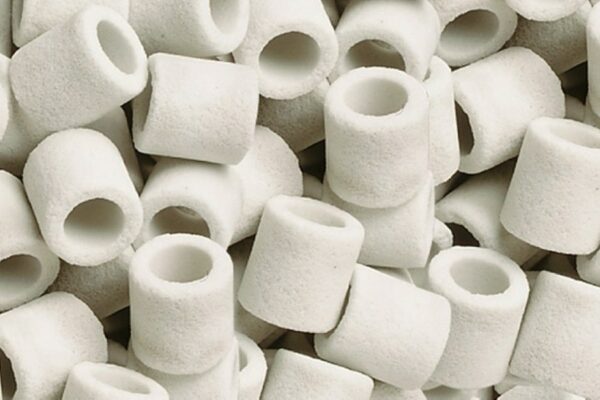
There are also filter media with a different shape than the ones in the previous picture; just think of JBL’s Micromec (spheres) or Sera’s Mini-Siporax (shaped like a tablet).
Complex-shaped objects have also been developed to provide as much surface area as possible in relation to volume, such as bio-balls or the internal surfaces of some filters.

Lastly, some bacteria prefer to settle on sponges, so a sponge with a fairly dense weave that provides both mechanical and biological filtration can also be provided.
Position of filtering materials
The order of filtration is important; the water coming from the aquarium should meet the filter materials as follows:
- materials for mechanical filtration;
- materials for chemical filtration;
- biological filtration materials;
- (optional) other materials for mechanical filtration.
The reason for this order is simple: mechanical filtration removes all the coarse residues that may foul the next stages (resins, biological support…) – and we do not want this to happen.
In fact, washing the resins is counterproductive, as we are going to wear them out; while washing the biological media may be harmful, as washing them removes the bacteria that we have worked so hard and patiently to establish.
Adding filter media
It is possible to add additional filtering stages; for example, it is not uncommon to find an additional mechanical stage after chemical filtration or after biological filtration, which we indicated in number 4 of the list on the previous section.
The purpose of this additional stage (not a replacement for the first one!) is to block any particles released by the resins or biological media themselves.
Placement of materials in the spaces
The positioning of the materials within the filter spaces is very important: the filtering materials must, in fact, completely cover their section in the filter, as the water is slug: it prefers to pass where it encounters the least resistance.
If we put a sponge smaller than the filter section, the water will pass mainly through the edges without being filtered; a sponge of the right size, on the other hand, will force all the water through.
The same applies to the biological supports, bio-balls, perlon wool etc.
A diagram will make this clearer:

Are all stages of filtration really necessary in an aquarium?
It should be pointed out that not all types of filtration are necessary: not only to save money on their purchase but also because they are unnecessary (if not harmful).
With the right choice of filling water and good aquarium management (correct set-up, population, feeding, fertilisation and maintenance) you can avoid the use of chemical filtration, as well as active carbon: we will only use these materials when really necessary.
With good management, the use of resins will be almost superfluous, while activated carbon will only be used in very specific cases, for example after a treatment with medication or when it is necessary to reset the aquarium, removing fertilisers, chelators, allelopathic substances and whatever else is present in the water.
UV-C lamps
I would like to devote one last brief paragraph to UV-C lamps (ultraviolet type C), otherwise known as a sterilising or germicidal lamp.
Some filters, especially external ones, are in fact equipped with it as standard, while sometimes a UV-C lamp is proposed to accompany the main filter.
This lamp kills all life forms that pass in front of it, e.g. algae and bacteria. Without going into too much detail here, the UV-C lamp should usually only be used in specific cases of necessity: its continuous use may be useless, if not harmful, as a permanently switched-on UV-C lamp may lead to the selection of hyper-resistant organisms and a weakening of the immune system of fish, which become used to a “too clean” water.
Credits
Basic scheme of a filter: By Fred the Oysteri, GFDL, https://commons.wikimedia.org/w/index.php?curid=36395503
Activated carbon: By Self (en:User:Ravedave) – Self (en:User:Ravedave), CC BY 2.5, https://commons.wikimedia.org/w/index.php?curid=1038326

